Monday, 10:10pm
23 January 2023
Books received #51
En-suites by the seaside; floating letters in Brazil; Harlow front porches; and Parisian type
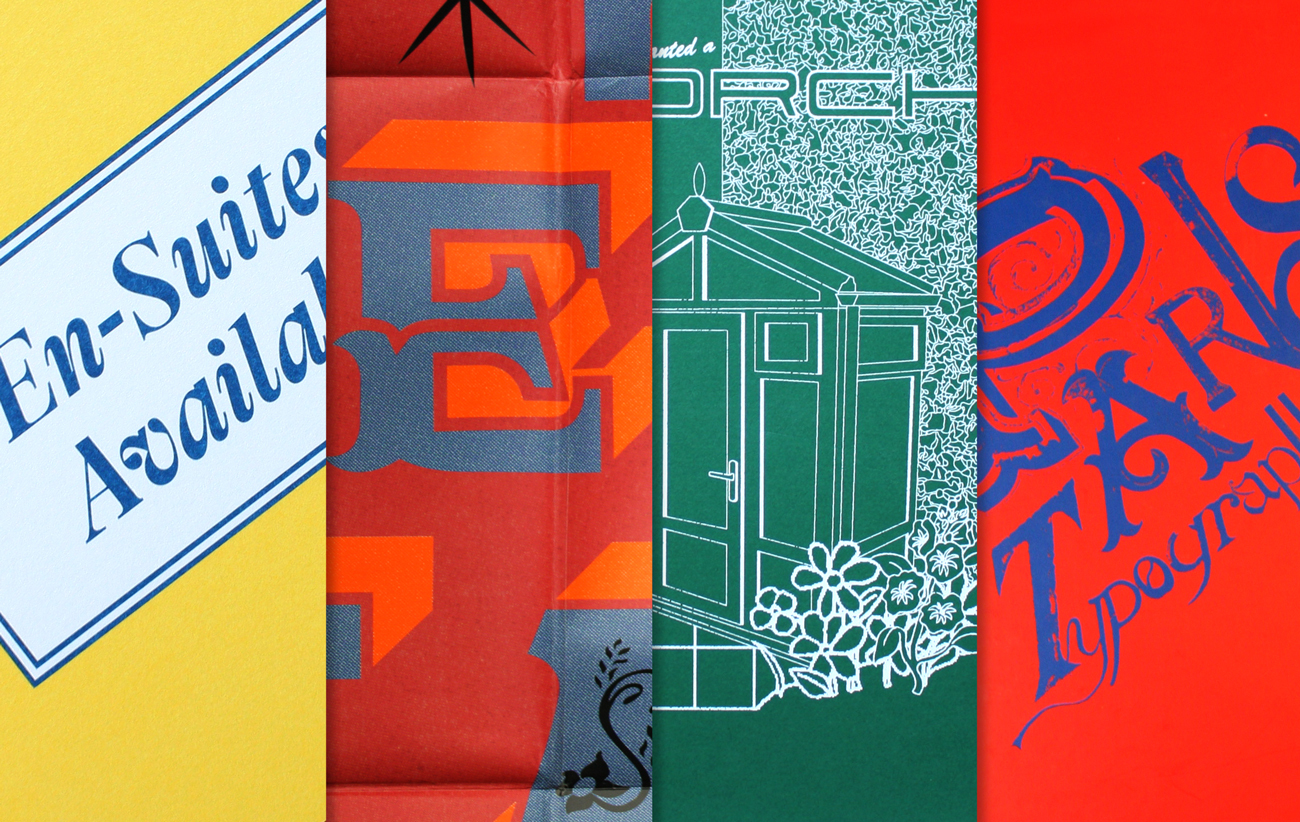
Here is a selection of titles that caught our attention in recent months.
Cover of En-Suites Available by Sarah Horn.
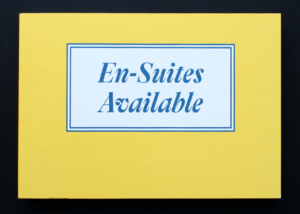
En-suites available published by Occasional Papers, £15
En-suites Available is a unique photographic celebration of Blackpool – a seaside town on the northwest coast of England and a popular tourist destination in the twentieth century. It features numerous examples of hotel and B&B signage, capturing the richness and diversity of the local type. The graphic designer and photographer behind this publication, Sarah Horn, began documenting her hometown in part of a student project. In doing so, she hoped to instil a sense of nostalgia and affection by reminiscing of a bygone era of town’s popularity and archiving coastal architecture and vernacular typography.
Conveniently pocket-sized, the book opens with an index of all of the photographed locations, making it a perfect tour guide for readers who want to explore the town on-foot. Aside from the index the book is kept very simple; it contains no other text, introduction or explanation, and focuses entirely on the typography, unique letterforms, strong colour palette and interesting names. The size of the book as well as its landscape format borrows from traditional holiday souvenir booklets, while the bright yellow cover is reminiscent of Blackpool’s sweet wrappers and the Golden Mile promenade stretching between the north and south piers in Blackpool.
En-Suites Available documents the vernacular typography and coastal architecture of the British seaside town, Blackpool.
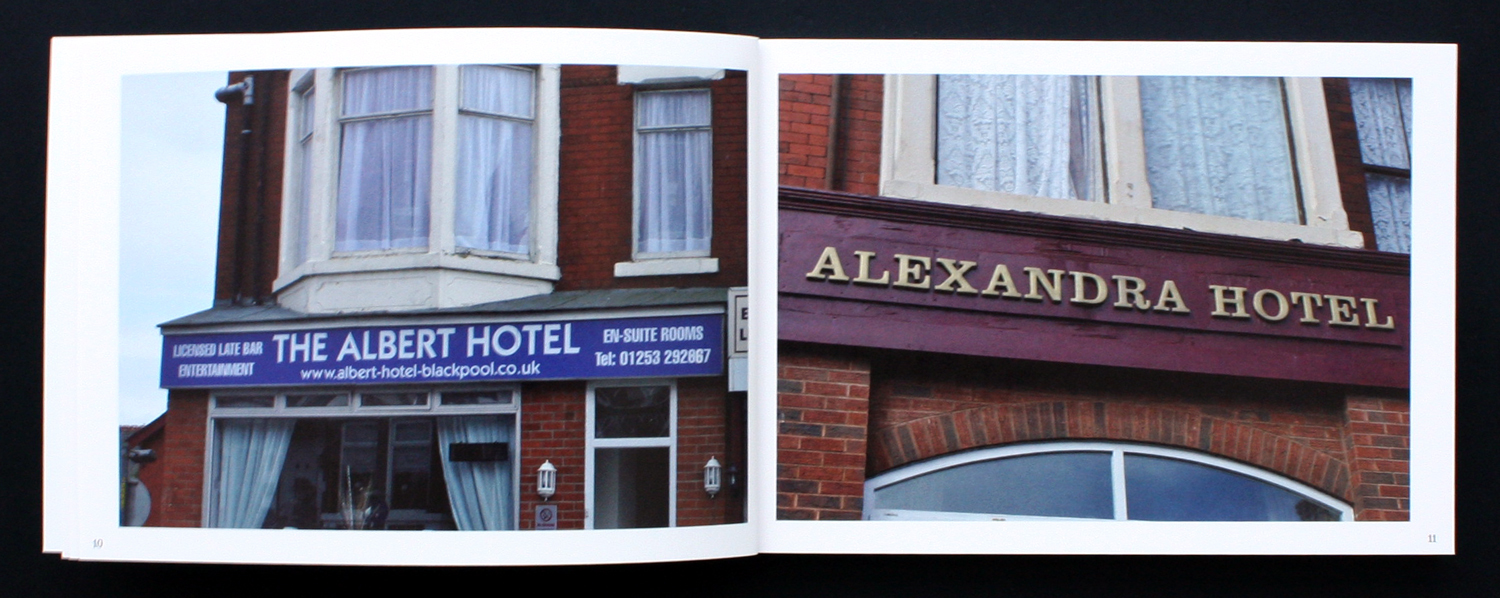
The book organises the frontages of photographed hotels alphabetically.
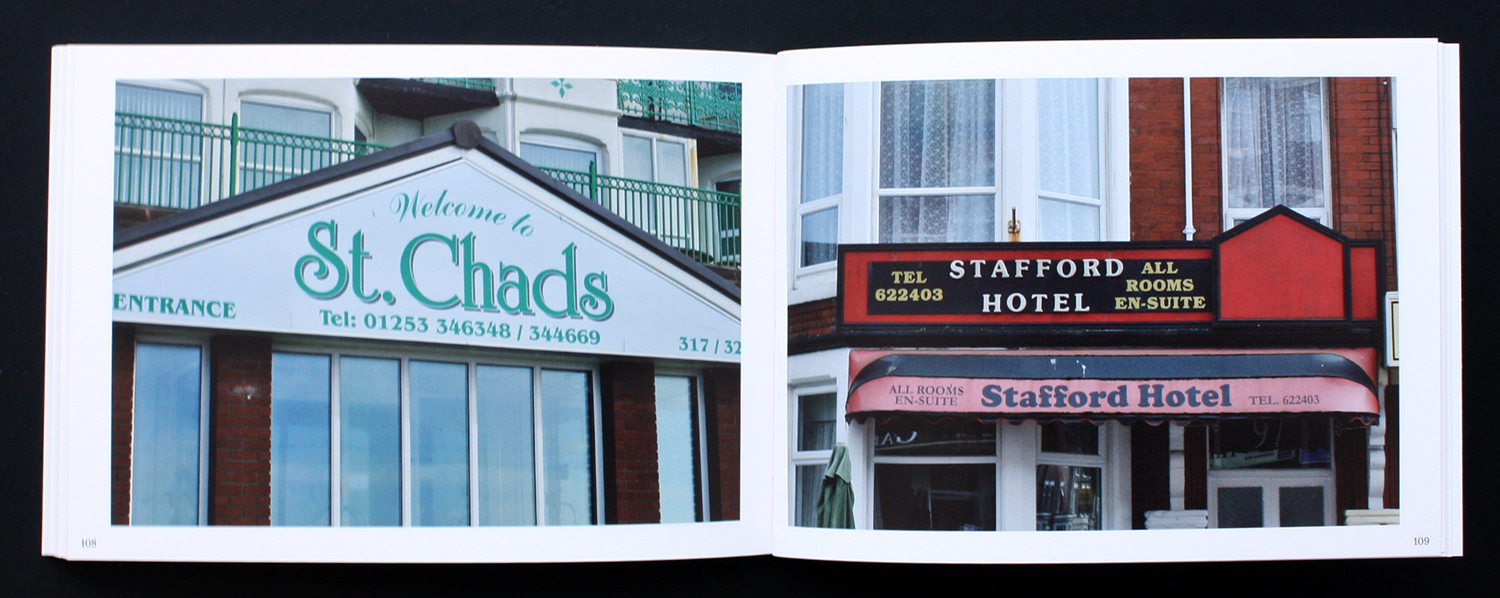
See also Justin Burns’s series of seven blog posts about seaside graphic design.
Cover of Letras que flutuam, designed by Felipe Wanzeler, with a book jacket that doubles as a fold-out poster.
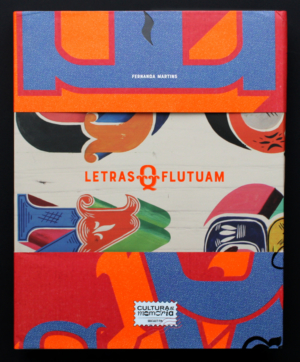
Letras que flutuam by Fernanda Martins, published by the State Secretariat of Culture (Secult)
The book Letras que flutuam [floating letters], by graphic designer and researcher Fernanda Martins, gathers fifteen years of research about decorative letters painted on the sides of Amazonian boats. As so much of the economic activity in small Amazonian communities takes place on or near the river, it is imperative for the businesses to distinguish themselves from one another and for the customers to be able to quickly decode each boat. This resulted in distinctive letterforms and decorative styles that are passed down between generations or self-taught by observation and reproduction. The book focuses on the craftspeople behind the ornamental letterforms, better known as abridores or ‘letter openers’, who share their wisdom, experiences and observations across the pages.
Letras que flutuam is divided into six chapters, zooming into the context of the letterforms, their aesthetics, tools and production methods, the abridores and their stories, as well as the progress and the continuation of Martins’ research project. The book is filled with photographs and illustrations, sharing the diversity of styles and applications of the letters, but most importantly the people and communities they serve.
The book captures the stories and reflections of Amazonian boat sign painters, who discuss different styles of lettering, tools and methods, and the cultural significance of their work.
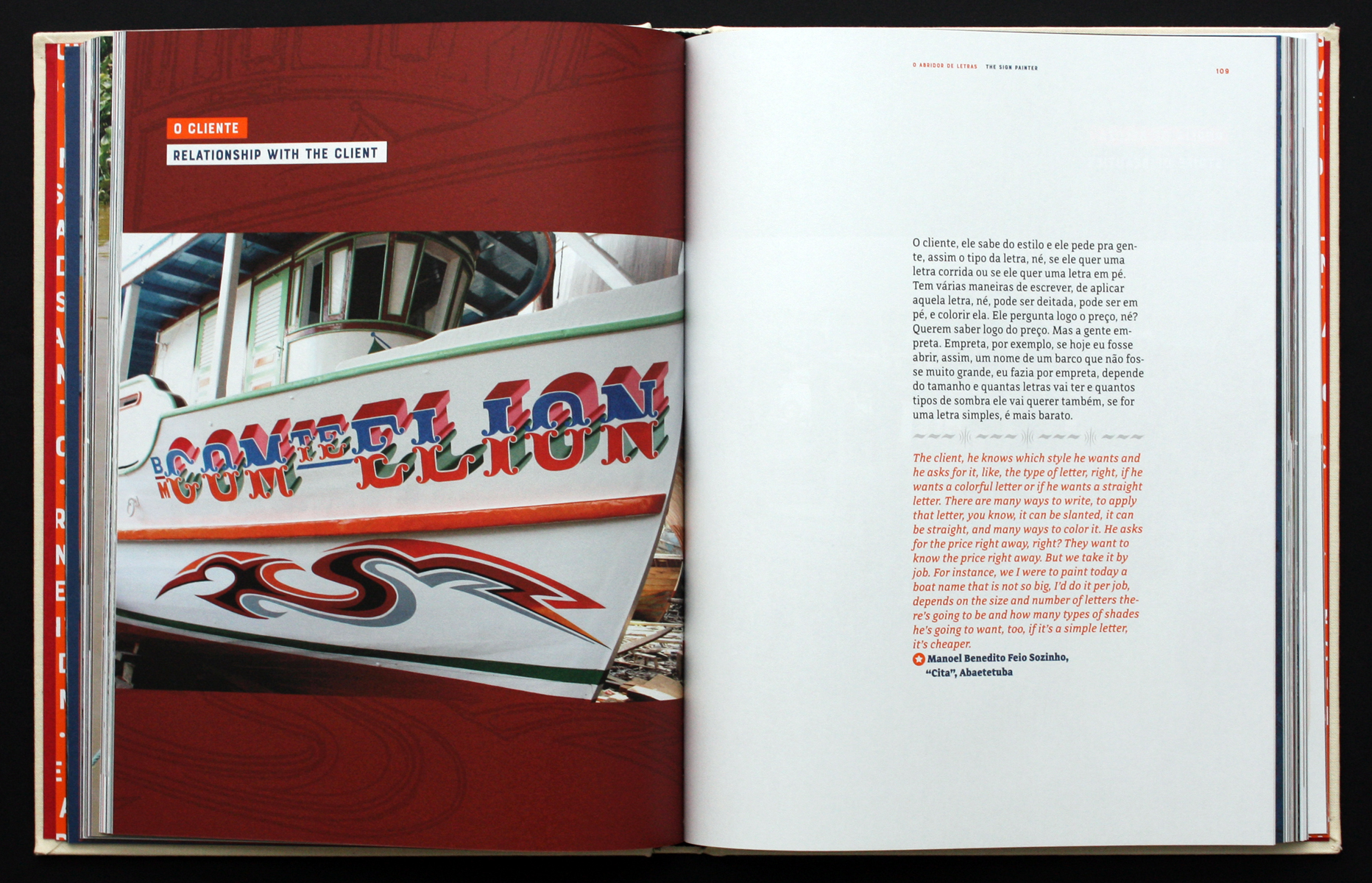
Spread from Letras que flutuam, discussing the reasons behind the colour choices in boat sign painting.
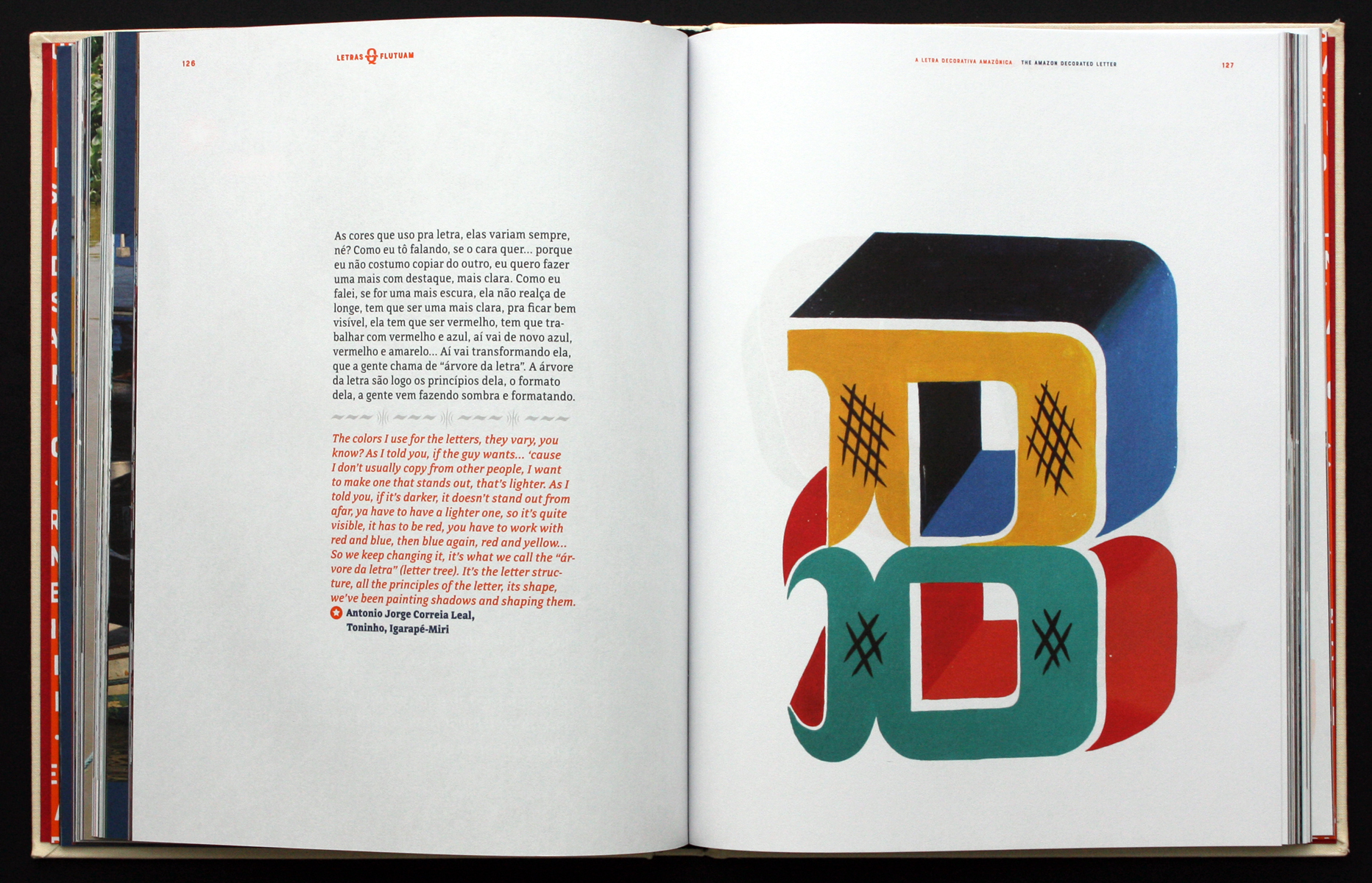
Cover of I’ve always wanted a porch, a book designed and published by Snootie Studios.
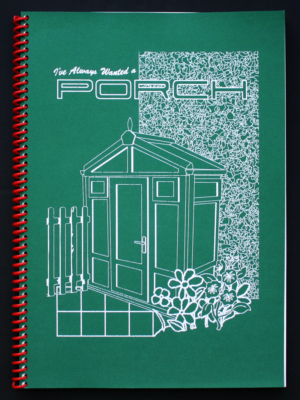
I’ve always wanted a porch by Snootie Studios
The book by Abbie Freeman and Harry Watson of Snootie Studios is another love letter to their hometown of Harlow, a ’new town’ north of London in west Essex. Focusing on capturing ‘the mundane’, I’ve always wanted a porch catalogues 100 front porches in the town. Each spread shows two photographs, each on opposing sides. Some of them highlight the similarities of the set up or the recurring architectural details, others juxtapose the entryways, emphasising the ways in which porches allowed homeowners to add more personal touches to their surroundings. Other than the house numbers, there is nothing to identify where exactly these houses are located.
At the centre of the book is a section on yellow pages with a short essay that outlines the historical and social context of porches in Harlow. It talks about their role in breaking the uniformity of Modernist principles applied to social housing in Britain, as well as challenges to the varied design choices and styles that became part of Harlow’s landscape as a result. Spiral bound, the book is a charming case study of British architecture told through choices of citizens more so than the architects.
Spread capturing two almost identical porches, with L-shaped cover.
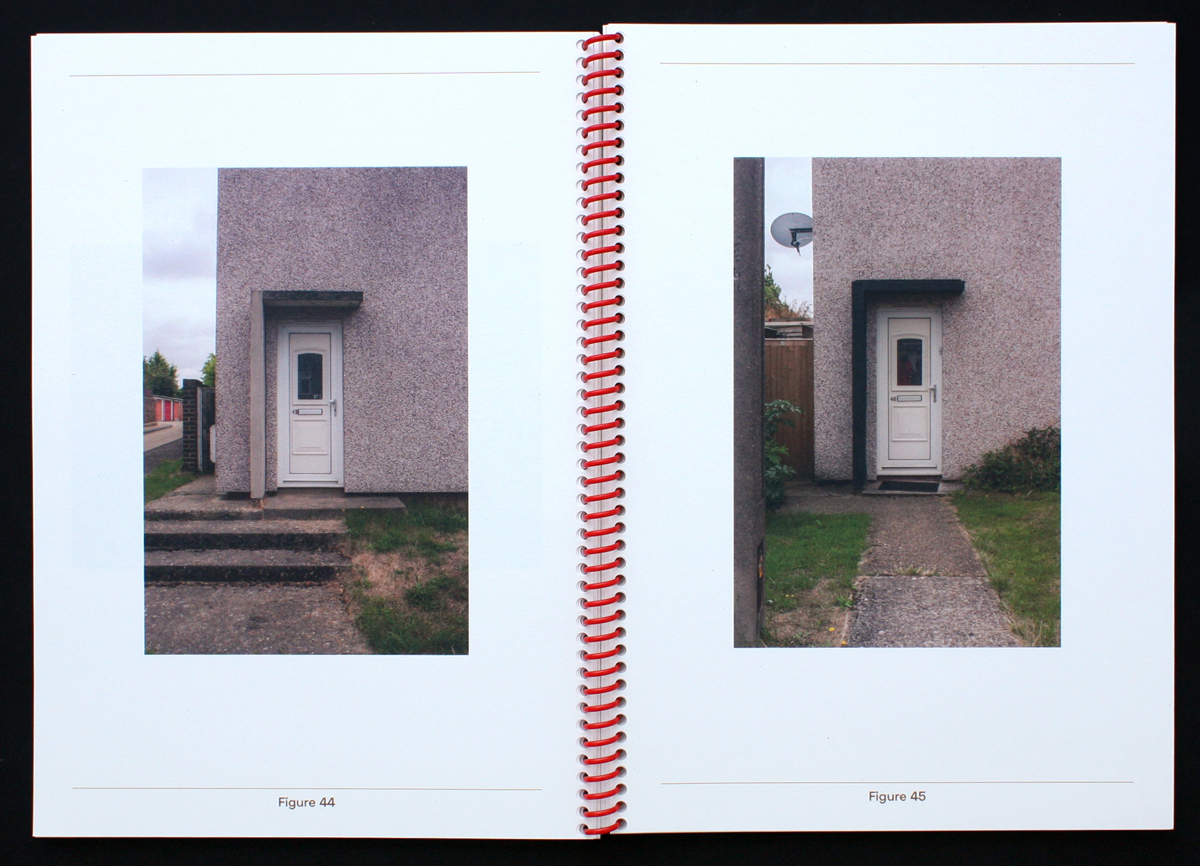
Spread, including a page of the central essay section of the book.
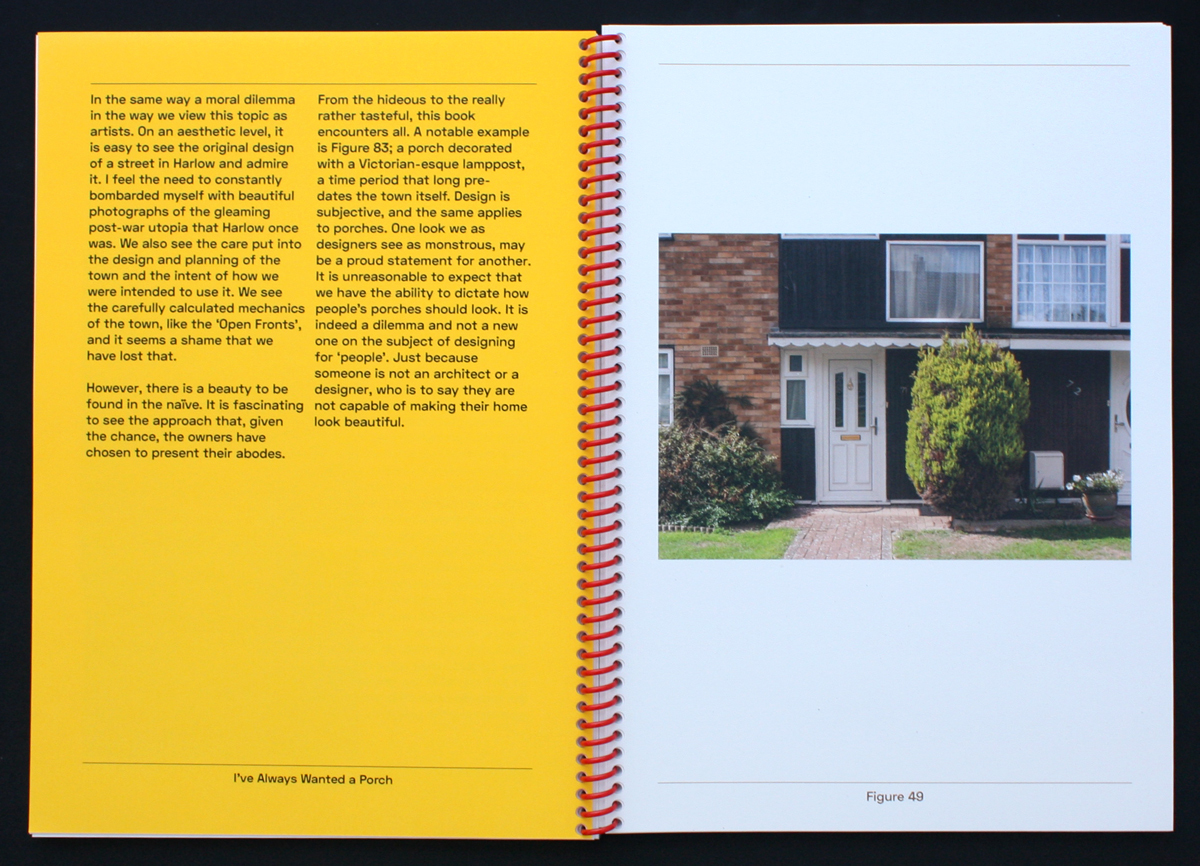
Cover of Paris typographie by Marguerite Chailloum published by Les Arènes, €45
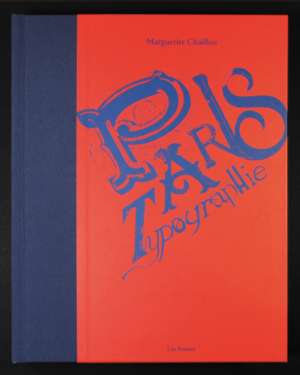
Paris typographie by Marguerite Chaillou from Les Arènes
Graphic designer Marguerite Chaillou tells the story of Parisian street typography, one district at a time. Divided into twelve different areas of Paris, this large book has more than 700 photographs, documenting the distinctive characteristics of each neighbourhood captured through particular typographic forms. For example, the Père Lachaise chapter centres around the type found at the landmark cemetery, while the Pigalle district is captured through the neon signs of sex shops and cabarets. Through such selective editing, Chaillou offers a highly personal interpretation of Paris.
The book brings together typography in a variety of formats – from posters, shopfronts, placards, mosaics, to neon, stencils and graffiti. Spliced between its pages are various quotes, poems and observations about Paris.
Spread of Paris typographie featuring the closed-down Le Canotier du Pied de la Butte performance hall in the Pigalle district.
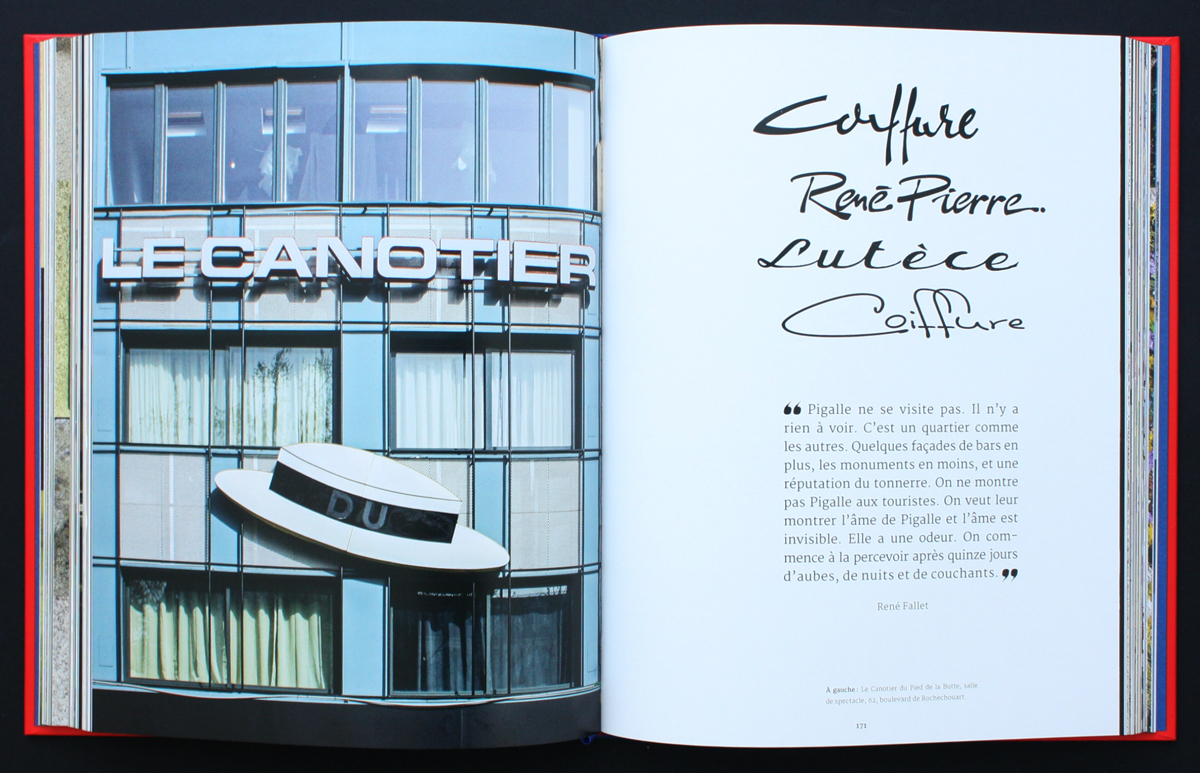
Spread of names found on the tombs and mausoleums of Père Lachaise Cemetery.
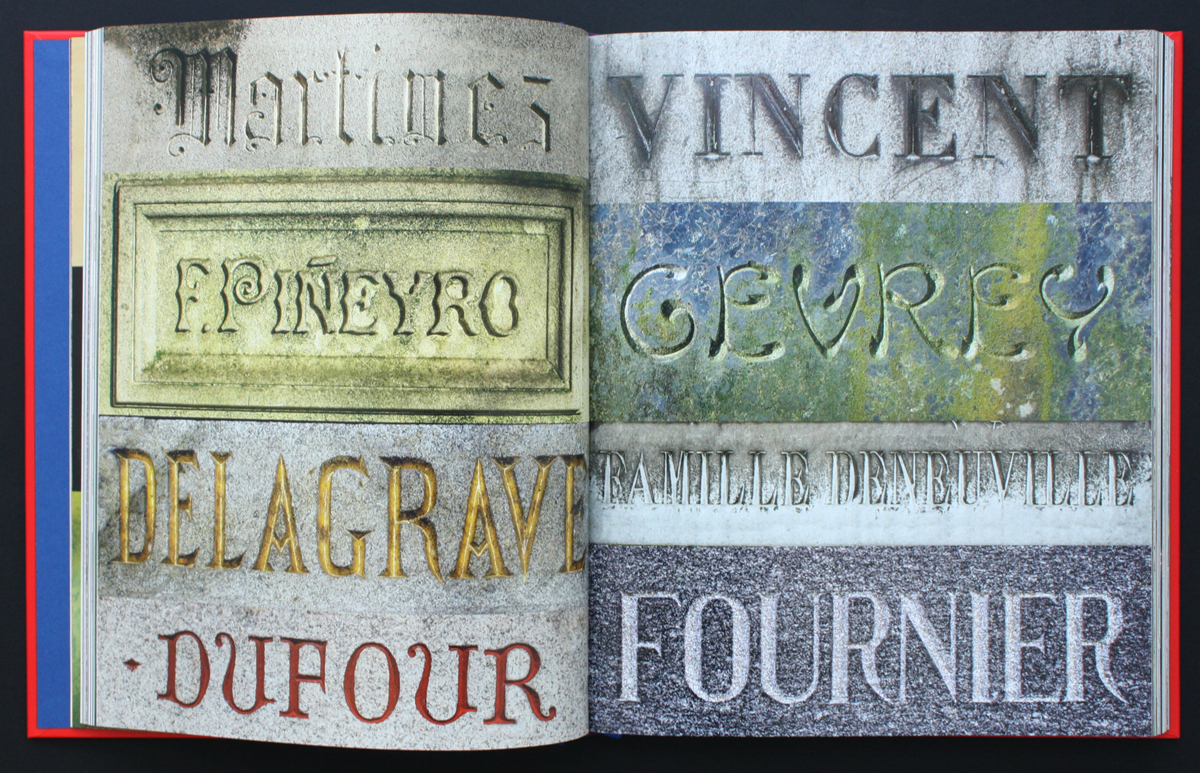
Eye is the world’s most beautiful and collectable graphic design journal, published for professional designers, students and anyone interested in critical, informed writing about graphic design and visual culture. It is available from all good design bookshops and online at the Eye shop, where you can buy subscriptions and single issues.
